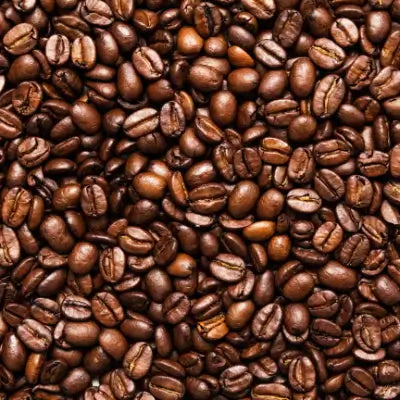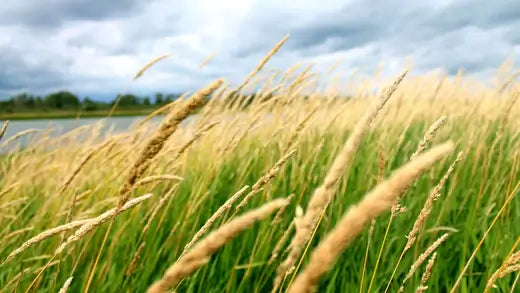Planting and Caring For Perennials:
Planting perennials is an excellent method of impacting your gardens, bringing stunning colors and textures that will give pleasure and energy for a long time to follow. However, you must ensure that these plants continue flourishing - not just when you plant them but throughout their entire growth cycle!
In this article, we'll look deeply at some of the best tips and tricks to grow and maintain perennial plants to ensure your garden will thrive throughout the year. Keep reading; there will undoubtedly be some suggestions in our extensive guide that will be useful to you!
Planting Perennials: Guide
If you reside in an area with clay-based soil, we recommend mixing in compost to help with drainage and improve soil fertility. A Comprehensive Guide If you have sandy soil; you can add some potting soil to the area.
Perennials Are Available in All Dimensions and Shapes
There is a myriad of ways to place plants in your yard. Many gardeners spread their perennials so that they can plant shrubs, trees, or perennials to create a smooth and layered appearance. It makes it visually appealing and decisive even in smaller spaces.
Once you've chosen the place and the layout of your garden, It's time to start digging! It's easy to plant your perennials when you follow the proper steps. The ideal moment to begin growing them is during the spring or in the autumn.
However, when you are in the summer and have perennials that still need to be planted, please don't put them off! The plants will be more comfortable in the soil and not in it. Remember that most annuals can be relocated in the fall if required. Follow the planting instructions below, and you'll be on the way to having a flourishing perennial garden.
First, make a hole deeper than the pot and twice that wide. The spot you plant in should be more significant than deep, similar to an empty bowl (this will allow the roots to develop more quickly).
Blend any fertilizer starter and amendments to the soil and keep your hole's dimensions for planting the same. Smash up any large chunks of earth you notice.
Remove your plant from the pot by grasping at the bank's base and lightly squeezing the container.
Cut the roots that might tangle or circle inside the container. You can do this by using your hand and gently massaging the root ball. It's okay to break a small number of roots when needed; however, ensure that the damage is limited to the primary, significant sources if possible.
Place your plant in the soil. Extend the roots upwards. Placing it too far from the ground can strain the plant.
Backfill the hole using your soil, ensuring you do not create air pockets. A hand can be beneficial at this stage so that one person can keep the plant in place while the other one backfills.
Space between plants is crucial to ensure each gets adequate nutrients, air, and room to develop. Sometimes, you may plant annuals between rows of perennials that grow slowly.
Begin gently tapping the soil with your hands to ensure the plant is squishy but needs to be better compressed. The plant should stand straight in the ground without additional support and not move when watered.
The area should be well-watered, approximately 3 inches below, to aid in establishing the roots.
Then, add mulch or another ground cover (straw or weed cloth, etc.) to keep weeds out and retain moisture. The soil cover should be three inches from the plant's root and about 2 inches thick.
Planting Goat's Beard Plant
Goats' Beard grows naturally in sunlight or full-sun areas. The natural habitat of Aruncus dioicus is an open woodland clearing rich in organic matter and a constant amount of water (without any sogginess!).
Goat's Beard is a low-maintenance plant that needs little trimming or fertilization. It's an excellent option for a woodland garden or mixed border and can be used to create cut flower arrangements.
Planting Yellow Trillium
Yellow trillium thrives best in moist, well-drained soil with good drainage. It is found at the base of deciduous plants in its natural surroundings, where it can enjoy the heavy shade.
Yellow trillium is an excellent garden plant because it can thrive in a shaded area and is not very maintenance intensive. As long as the plant is fertilized and has adequate water, it will perform well.
Planting Swamp Milkweed
Swamp milkweed is a summer flowering perennial that provides lively colors and texture for your backyard. Its sweet flowers draw pollinators, such as butterflies and hummingbirds. Additionally, its leaves provide much-needed food to monarch caterpillars. Furthermore, its robust root structure aids in preventing erosion.
The perennial plants produce seeds, creating inside pods that dry in the summer heat, and then pop open to reproduce in the next season. They're easy-growing plants that want a sunny spot with well-drained soil and water--but with good drainage.
Care For Perennials: Guide
Care in Spring
Spring is the ideal time to split or divide plants, mainly perennials. As perennials grow, they may overcrowd and require dividing every few years to ensure healthy growth. To determine if your plant area requires division, look for signs of overcrowding. Certain plants, like peonies bleeding hearts, and poppies, don't need or enjoy the idea of dividing.
Spring is also a great time to introduce new perennials in your yard. The combination of moderate temperatures and rain will allow plants to grow without much effort on your part. In addition, it's better to fertilize both new and old plants in the spring since they'll be in the growth phase, and a little boost could aid them in starting with a strong start.
Securing any flower that requires additional support, such as peonies, is also essential so that you don't have sloppy stems after they have bloomed fully. Following these tips during spring will ensure your plants grow and blossom beautifully throughout the year.
Perennials Care in Summer
To ensure healthy growth and growth within your garden beds, you must keep them weeded regularly. The weeds could challenge your plants for water and nutrients, ultimately slowing the growth of your plants.
Maintaining moist and well-drained soil is essential for the healthy growth of your plants; however, you must be cautious not to overwater plants. During the summer months, provide your plants with the necessary water they require, especially during droughts, to prevent them from becoming stressed.
Deadheading is a different method to promote more flowers and growth in the coming season. Take out any flower that has completed blooming before producing seeds. It will channel the energy back to the roots and yield additional growth and flowers shortly.
Also, keeping an eye on the foliage is essential to maintain the excellent health your garden plants enjoy. Check the leaves regularly to identify insects or fungi that may cause damage to the plants. Follow these tips to ensure your plants remain well-nourished and healthy throughout the growing season.
Care in Fall
It's the ideal time to prepare your garden for the next winter months as October approaches. If you have yet to plant any perennials in spring, producing them is an ideal moment. Planting new perennials that will stay in the soil is also possible. Pruning is crucial for perennials to preserve their form and overall condition.
The first frost typically leaves the foliage dead, So it's best to trim flowering plants like daylilies and herbaceous peonies down to the ground. But don't worry; they'll come again when spring arrives.
If you want to protect your garden from winter's harsh elements, it is better to apply mulch or reapply it on any areas that require it before the temperatures get dangerously low. It will ensure that your garden remains well-groomed and flourishing all through winter.
Care in Winter
When temperatures drop below freezing, you must secure your plants for survival. Be sure to eliminate the veil or the mulch after the threat of freezing temperatures is gone. Perennials planted in containers can wrap an ice blanket around the base or relocate the container to a secure area, such as the garage or close to brick walls.
To make tracking where you planted it easier, you should put markers or flags in the dirt, primarily when you reside in an area with significant snowfall. If it's snowing, you should keep it as it is. It will help to insulate your ground and provide the needed moisture to your plants once it has melted. Perennials typically thrive better when they have a layer of snow than without it. Therefore, avoid being in a joyful state to clear the snow off your planter area.
Perennials Care in Summer
To ensure healthy growth and growth within your garden beds, you must keep them weeded regularly. The weeds could challenge your plants for water and nutrients, ultimately slowing the growth of your plants.
Maintaining moist and well-drained soil is essential for the healthy growth of your plants; however, you must be cautious not to overwater plants. During the summer months, provide your plants with the necessary water they require, especially during droughts, to prevent them from becoming stressed.
Deadheading is a different method to promote more flowers and growth in the coming season. Take out any flower that has completed blooming before producing seeds. It will channel the energy back to the roots and yield additional growth and flowers shortly.
Also, keeping an eye on the foliage is essential to maintain the excellent health your garden plants enjoy. Check the leaves regularly to identify insects or fungi that may cause damage to the plants. Follow these tips to ensure your plants remain well-nourished and healthy throughout the growing season.
Care in Fall
It's the ideal time to prepare your garden for the next winter months as October approaches. If you have yet to plant any perennials in spring, producing them is an ideal moment. Planting new perennials that will stay in the soil is also possible. Pruning is crucial for perennials to preserve their form and overall condition.
The first frost typically leaves the foliage dead, So it's best to trim flowering plants like daylilies and herbaceous peonies down to the ground. But don't worry; they'll come again when spring arrives.
If you want to protect your garden from winter's harsh elements, it is better to apply mulch or reapply it on any areas that require it before the temperatures get dangerously low. It will ensure that your garden remains well-groomed and flourishing all through winter.
Care in Winter
When temperatures drop below freezing, you must secure your plants for survival. Be sure to eliminate the veil or the mulch after the threat of freezing temperatures is gone. Perennials planted in containers can wrap an ice blanket around the base or relocate the container to a secure area, such as the garage or close to brick walls.
To make tracking where you planted it easier, you should put markers or flags in the dirt, primarily when you reside in an area with significant snowfall. If it's snowing, you should keep it as it is. It will help to insulate your ground and provide the needed moisture to your plants once it has melted. Perennials typically thrive better when they have a layer of snow than without it. Therefore, avoid being in a joyful state to clear the snow off your planter area.

















































